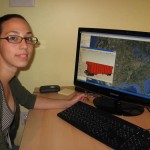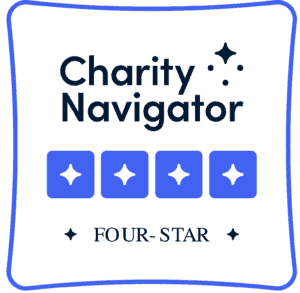You could say it all started with the Christmas Bird Count back in 1900. According to the Audubon Society, that’s the year ornithologist Frank Chapman proposed a new holiday tradition. Instead of shooting as many birds as possible (at the time, a treasured part of the holiday for many), why not count as many as possible instead? The result was an annual bird census in which ordinary citizens throughout North America strap on their binoculars and count how many birds (and what species) they see at Christmastime. Over the decades, the data collected by thousands of these citizen scientists (as they’re now called) has been used to track population trends, flag declining species and, in some cases, propose protective measures.
Citizen science has expanded over the years, and in the Shenandoah Valley that includes water quality monitoring by Friends of the Shenandoah River (FOSR). Since 1989, dozens of FOSR volunteers have collected water samples along the river and its tributaries twice a month. FOSR analyzes those samples for key pollutants and other important parameters such as pH, temperature and turbidity, creating a long-term database available on their website to anyone interested. Other groups, such as the Piedmont Environmental Council, train folks to collect and identify the creepy crawly critters living on stream bottoms that indicate whether a habitat is healthy or not. Together, these citizen-driven databases help scientists and regulators identify problems, track changes and recommend better controls or management.
But the electronic age has opened up a whole new range of opportunities, even for those who don’t want to get their feet wet. World Wildlife Fund (WWF) recently announced a way for anyone with a digital camera to help document freshwater fish species throughout the world. According to WWF, freshwater fish are one of the most endangered groups of animals on Earth, and North American fish are predicted to become extinct five times faster than terrestrial wildlife. To help keep track of what species still exist and where they’re living, WWF, along with several other conservation groups, announced the Freshwater BioBlitz this month. With the BioBlitz, would-be citizen scientists simply have to snap photos of fish they see while fishing, traveling, hiking, or whatever, and upload them onto the website. Scientists then review the photos, identify the species and store the information in an archive used by scientists around the world.

Closer to home, the remote sensing group SkyTruth is recruiting anyone with a computer to help them document the incidence of fracking in the mid-Atlantic. Already, volunteers have identified the location of active drilling sites in Pennsylvania as part of SkyTruth’s FrackFinder crowdsourcing project. FrackFinder identified permitted hydraulic fracturing (or fracking) drilling locations in the state of Pennsylvania, created an easy online tutorial for anyone to use, and asked users to determine the status of those locations and the presence of nearby ponds based on imagery provided. The result was a dataset outlining the status of fracking throughout Pennsylvania from 2005 to 2010. Researchers from the Bloomberg School of Public Health at Johns Hopkins University are using this dataset to study the health impacts of drilling. SkyTruth is now looking for volunteers to help them figure out which of those ponds are wastewater ponds associated with fracking. Over time, SkyTruth hopes to map fracking activity throughout the United States. (Full disclosure: this blogger is married to SkyTruth’s founder and President!)
Even bird counts have now gone digital. This coming Presidents Day weekend, the National Audubon Society, the Cornell Lab of Ornithology, and other birdy organizations are holding the Great Backyard Bird Count. Count the birds in your backyard (or anywhere else) for as little as 15 minutes and submit your count online.
We’ve come a long way in 114 years, and birds and fish and rivers and streams need our help more than ever. Good thing it’s also easier than ever to make a difference.


One thought on “From Binocs to Binary: Citizen Science in the Digital Age”